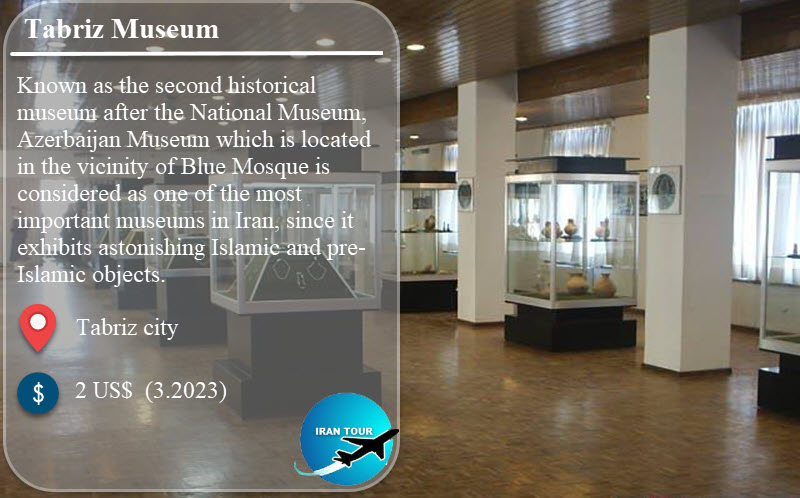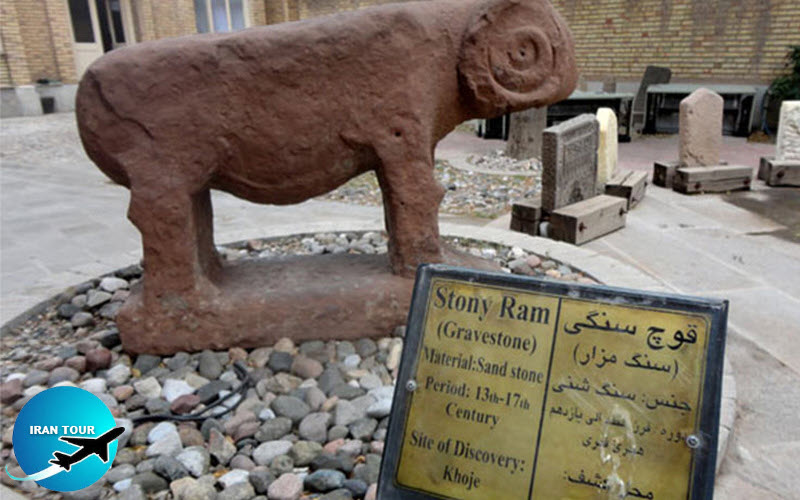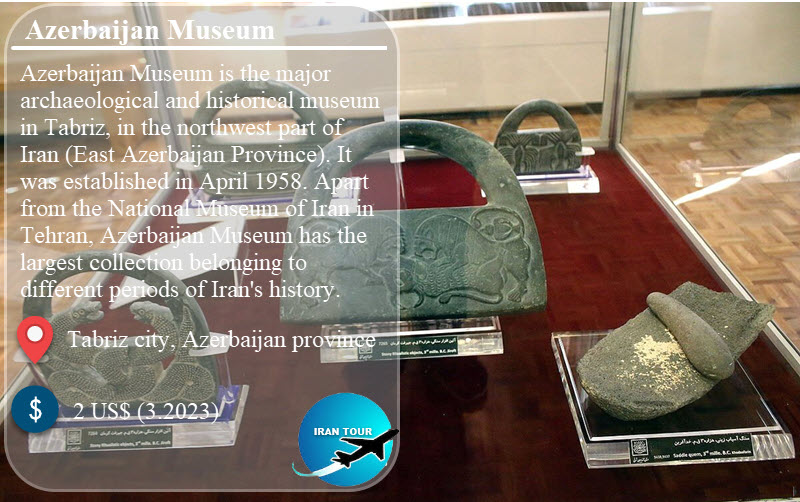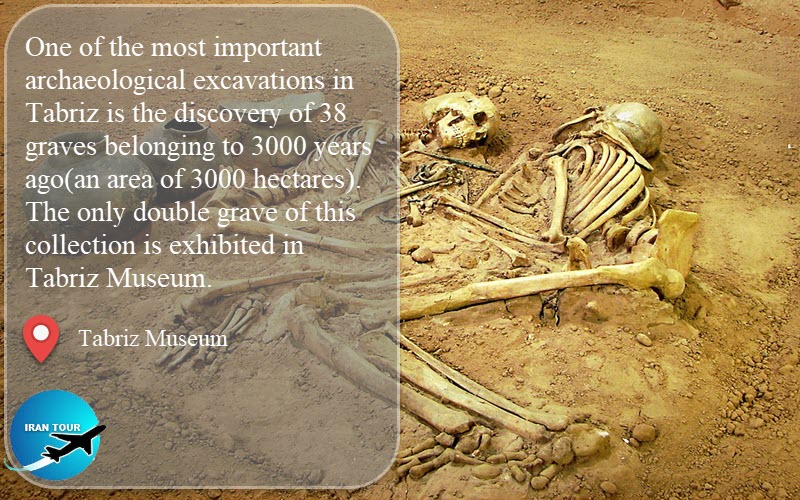Copyright 2020 - 2021 irantour.tours all right reserved
Designed by Behsazanhost
Tabriz Museum, the second creditable Iran museum
Tabriz Museum, the second creditable Iran museum
If you are going to visit the second richest museum in Iran, Tabriz or Azerbaijan museum with tons of historical and ancient objects is calling you. A great exhibit with various historical & ancient objects from different archaeological sites throughout the country and especially in Azerbaijan province to discover the full chronological span of its history. These characteristics make the Tabriz museum one of the most important ones in Iran and a truly national one.
Azerbaijan Museum was established in April 1958. This museum with three major halls, a yard museum, office rooms, and a library with more than 2500 books, both handwritten and printed, about history, archaeology, art, and Iranian culture is the best place to discover Iran's history.
 |
Why Azerbaijan Museum?
-In the vicinity of the famous historical site.
- It is one of the top ten attractions of Tabriz.
- It is the second-best archaeological museum in Iran.
-Good exhibits from the Urartic period, some Luristan bronzes, and a number of others.
-A wonderful collection of art and history of Azerbaijan. collection of art and history of Azerbaijan.
-It houses a unique collection of historical coins from the Achaemenid period to the Qajar period.
Galleries:
 |
Yard or open space museum
One of the most important parts of this museum is an open-air section, where a large number of Gravestones, were collected and transported to this place from cemeteries around the city (Tabriz), as well as various East Azerbaijan cities cemeteries. These gravestones with different shapes belong to the 14th to 17th centuries and more are collected from cemeteries around Tabriz city and all over East Azerbaijan province. They are divided into four categories: plant, geometric, Altar, and inscription motifs that have a direct relationship with religious beliefs of decided. They are decorated with poems and verses that show the mortality of people's initiation into the world.
 |
Ground Floor
On the ground floor of the Azerbaijan Museum, historical objects and ancient objects related to the pre-historic and pre-Islam eras have been collected.
The most important objects are:
- Pottery related to Ismailabad hill with seven thousand years old.
- The Serpentine minerals found in Jiroft with images of various plants and animals from prehistoric times.
-The female goddess statue found in Rostamabad, Gilan, is three thousand years old; This statue depicts the value of women in ancient Iran.
-Rhytons from two to three thousand years ago.
-The bodies of a man and a woman dating back to three thousand years ago. They were found in archaeological excavations in the vicinity of the Blue Mosque. These bodies are considered to be the remains of a three-thousand-year-old cemetery that was discovered in this area.
 |
First Floor
The oldest works on the first floor of the Azerbaijan Museum are related to the 4th century of Hijri and the city of Neishabur, the most important features of which are the use of Kufi script, the use of Slimi patterns, and the use of white glaze in these works. Pottery vessels from the Ilkhanan period and a coded lock from the 6th century AH are also considered other historical artifacts of this section.
In this hall of Iranian historical coins and seals, the oldest coins minted in Iran from the Achaemenid period to the Qajar period are displayed. Also, examples of Iran's historical seals are placed in this section.
 |
Basement
The sculptures made by Ahad Hosseini are kept in the basement of the Azerbaijan Museum. These sculptures have a deep view of human history and morality during the past centuries - especially the 20th century. In this section, a collection of human figures, tombstones, inscription stones, stone rams, and stone sculptures are displayed.
- Details
- Category: Museums of Tabriz